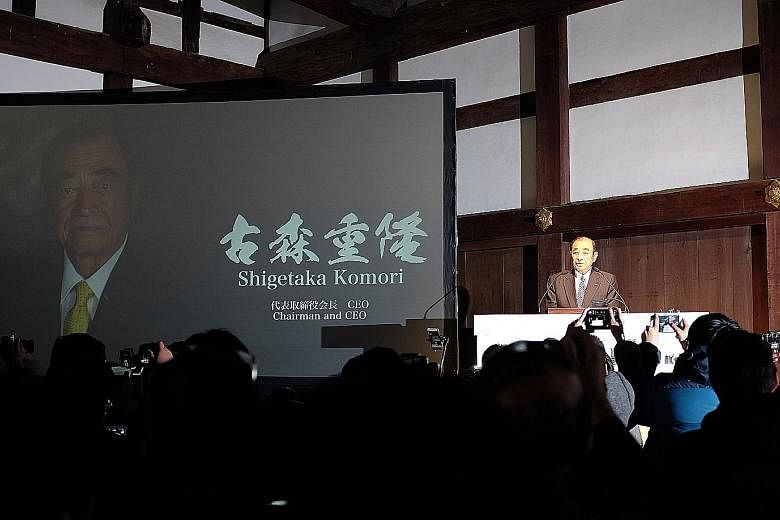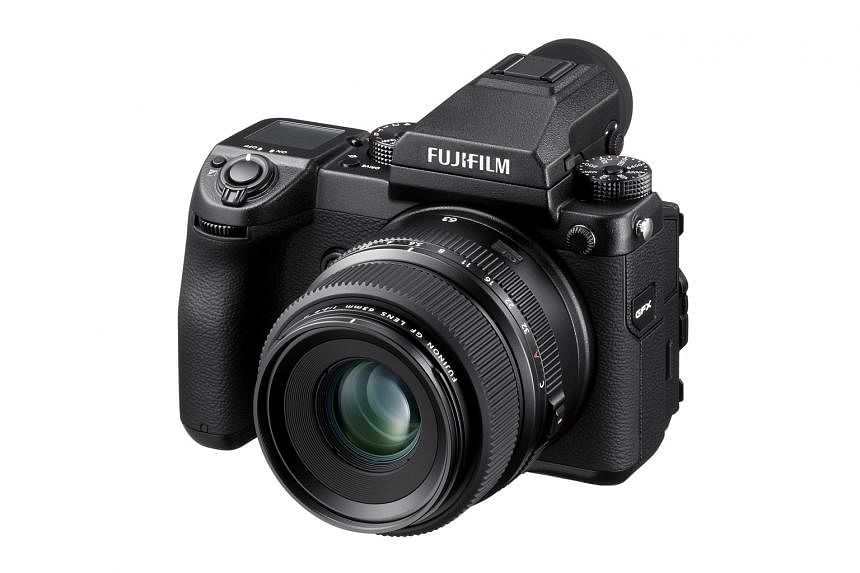Imaging giant Fujifilm is betting on medium-format cameras amid the declining digital camera market.
At a press conference in Kyoto, Japan, last week, Fujifilm chairman and chief executive officer Shigetaka Komori announced that the company's new GFX 50S medium-format mirrorless camera will be available worldwide by the end of next month. He added: "If you look back several years later, you will see this presentation to be the game-changing event."
Mr Komori's confidence stems from Fujifilm's mirrorless cameras doing well despite the general decline of the camera market.
He said that with Fujifilm's previous expertise in medium format combined with its current mirrorless camera technology, he is confident the GFX 50S will liven up the camera market.
The digital camera market has been in decline since its peak in 2010. According to Camera and Photo Imaging Association (CIPA), the international body for camera standards, shipments of digital cameras worldwide in 2010 amounted to 121 million units. In 2015, that number was 35 million.
One of the major reasons for the sharp decline is the smartphone. Compact digital cameras used to be the main staple of the camera industry. That is, until cameras in smartphones got so much better.
Euromonitor International senior research analyst Hiromi Yamaguchi said: "This unfavourable market condition is more visible for entry models because of the high penetration of smartphones, which substitute digital cameras." He added that it is a good strategy to focus on products with a premium price line and higher margins.
In terms of image quality, medium-format cameras are unlikely to be challenged by smartphone cameras in the near future because of their much bigger image sensors, which gather more light and image details.
The GFX 50S' image sensor is 1.7 times bigger than a full-frame DSLR camera's image sensor. Considering that the latter is 55 times bigger than that of an iPhone 6, the image quality of medium-format cameras will be very difficult to beat.
There are already many digital medium-format cameras in the market. However, many models are quite bulky and expensive.
Fujifilm is addressing these issues with the GFX 50S. Its size is comparable to that of a DSLR camera and it weighs only 920g. By comparison, the Hasselblad H3D medium-format camera weighs more than 2kg.
In addition, while a Mamiya Leaf medium-format camera system will set you back nearly US$30,000 (S$42,770), the GFX 50S with three lenses costs only around US$12,000.
"For photographers starting on a clean slate, the Fujifilm GFX 50S will make a very attractive choice," said professional photograher Nelson Tan, 40.
But while the new camera is more affordable, it is still not exactly cheap.
"The price point will remain as a hurdle for general consumers to purchase or switch to medium format," said Mr Yamaguchi.
During the Fujifilm press conference, which was held in Kyoto's Nijo Castle, Mr Komori said that the venue was chosen for a significant reason. It was here that the Japanese Emperor Meiji issued the edict abolishing the Shogunate during the Meiji Restoration in 1868. The Meiji Restoration was ultimately responsible for the rapid emergence of Japan as a modernised nation in the early 20th century.
Similarly, Mr Komori believes that the launch of GFX 50S is a turning point for Fujifilm and photography itself.
He added that Fujifilm will continue to persevere despite the industry headwinds. "I consider it our mission to maintain the photography culture, as it is an indispensable part of human culture," he said.


